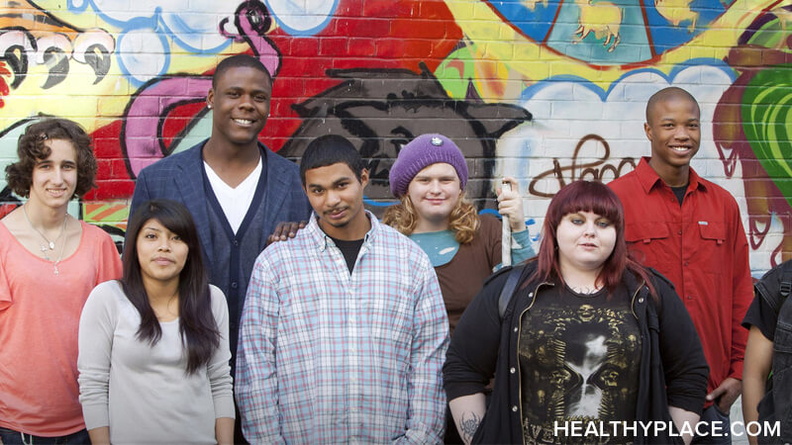Teen Mental Health Stigma vs Fact

Despite considerable effort by parents, professionals, and others to reduce stigma and enhance understanding of teen mental health issues, a troubling amount of misinformation remains (Youth And Mental Illness Stigma). This post is one humble attempt to dispel four unfortunately common stigmas about teens and their mental health.
Teen Mental Health Stigma #1: It is just part of being a teenager.
Fact: Yes, it can sometimes be difficult to differentiate between symptoms of a mental health disorder and typical teenage behavior. For example, mood swings, reckless behaviors, abnormal sleep patterns, and defiance can all be symptoms of a variety of mental health problems. They are also common occurrences in virtually every family that has a teenager.
But just because a symptom or a behavior is common does not mean that it can never signal a deeper problem. Think of it in terms of physical illnesses. A headache can be nothing more than the result of a stressful day. It can also be a symptom of a brain tumor. Most people who get headaches do not develop brain tumors, but this does not mean that brain tumors do not exist.
Apply the same logic to teen mental health problems and normal teenage behavior. Most teens will have moments of moodiness, sadness, and problems sleeping. And most of these teens will never need treatment for a mental illness. But for teens whose symptoms are severe enough to disrupt their lives, the problem is not a normal part of being a teen. The problem is mental illness.
Teen Mental Health Stigma #2: It is just a phase.
 Fact: This stigma is often paired with the one from the previous section. Right after someone says that all teens experience certain behaviors, he or she will often follow with the observation that it is just a phase, and the young person will “grow out of it.”
Fact: This stigma is often paired with the one from the previous section. Right after someone says that all teens experience certain behaviors, he or she will often follow with the observation that it is just a phase, and the young person will “grow out of it.”
Yes, many people experience improved emotional stability after their teen years have ended, and they are no longer dealing with the many internal and external stresses, pressures, and changes that occur during that time of life. But, as noted in the previous section, there are distinct and essential differences between common teen experiences and symptoms of teen mental health disorders.
Mental illnesses do not magically vanish once an individual reaches a certain age. In fact, failing to get proper treatment in the early stages of a mental health problem puts a person at risk for myriad negative outcomes, including more severe symptoms and the temptation to engage in unhealthy coping techniques such as substance abuse or self-harm. “Ignore it and it will eventually go away,” is a profoundly poor way to respond to teen mental illness.
Teen Mental Health Stigma #3: It is a sign of weakness.
Fact: This stigma is usually held by people who also believe that “kids did not have all these mental health problems back in the [insert decade when speaker was young].” The past, or so the stigma would have us believe, was a halcyon time when teens were either more carefree or stronger (or both), and every teen problem could be solved with a heart-to-heart talk, a refreshing milkshake, and a good night’s sleep.
It is human nature to romanticize the past. And this stigma does have a kernel of truth. It is true that teens from previous decades were not diagnosed with mental health disorders as often as today’s teens are. But that may have more to do with increased awareness, advanced diagnostics, and a greater understanding of the true nature of teen issues than with some mythical weakening of the teen mind (Mental Illness At School).
Again, it helps to compare mental and physical illness. Decades ago, it was common for deaths to be attributed to old age or natural causes. Today, a specific cause is almost always identified. The illnesses have not changed; what is different is that we are now able to detect and name them.
Teen Mental Health Stigma #4: It is hopeless
This final stigma is at the opposite end of the spectrum from “it is just a phase.” Teenagers or even adolescents who struggle with certain mental or behavioral health disorders risk being labeled as lost causes by those who believe that their negative symptoms are evidence of core character deficiencies.
Decades ago, addiction was seen as little more than poor self-discipline or proof of low character. Today, we know that chemical dependency is real, progressive, and, most importantly, a treatable condition (Addiction Symptoms: Signs Of An Addict). We need to do our best to embrace this perspective when discussing teen mental health issues. Too many young people are being criticized, punished, or excluded for behaviors that are actually symptoms of treatable mental health disorders.
Dispelling all of these stigmas and embracing the truth that teen mental illness is real (and treatable) can have a transformational impact on the lives of countless young people.
About The Author: Hugh C. McBride writes on behalf of Four Circles Recovery Center, an innovative and effective wilderness-based treatment program for young adults, ages 18 to 28, who are struggling with substance abuse, chemical dependency, and certain co-occurring mental health issues.
APA Reference
Poling, R.
(2016, February 26). Teen Mental Health Stigma vs Fact, HealthyPlace. Retrieved
on 2025, April 18 from https://www.healthyplace.com/blogs/mentalhealthtreatmentcircle/2016/02/myths-and-facts-about-teen-mental-health-issues
Author: Ryan Poling, MA, MAT
People living with schizophrenia are generally more likely to harm themselves and/or be a victim of violence than they are to harm others.
With every designated mental health or illness awareness month or week, various mainstream media (news, social and entertainment) will platitudinously state or promote the obvious: that society, collectively and as individuals, must open up its/our minds and encourage common dialogue toward far more fruitfully treating and preventing mental illness.
Needless to say, everyone will agree, at least publicly, that stigmatizing such illness and, by extension, its bearers should have ceased long ago. But then that’s basically as far as it goes.
Unlike with the loud and apparently quite effective voices lobbying the news, social and entertainment media against reinforcing stereotypes based on skin color, sexuality, gender and even gender bending, there's no comparable influential protest voice against reinforcing stereotypes based on mental illness. It's sometimes referred to as the squeaky-wheel effect.
When it comes to irresponsibly stereotyping and/or stigmatizing people specifically living with schizophrenia, the 2008 box-office-hit movie The Dark Knight (as overall entertaining as it was) could be a textbook example.
In one shameful scene, the glorified Batman character recklessly erroneously grumbles to the district attorney character Harvey Dent that the sinisterly-sneering clearly-conscience-lacking murderer he has handcuffed to a wheeled stretcher is “a paranoid schizophrenic — exactly the kind of mind that the Joker attracts.”
Like The Dark Knight, the 2021 horror-flick Old also stigmatizes schizophrenia via a creepy character’s violent behavior.
We had entered the third millennium, yet a 4/4-star-rated Hollywood hit movie as well as a much more recent film, could still be readily found flagrantly demonizing characters based on their mental illness.
There was no societal or vocal condemnation. It seemed to not matter that people living with schizophrenia are generally more likely to harm themselves and/or be a victim of violence than they are to harm others.